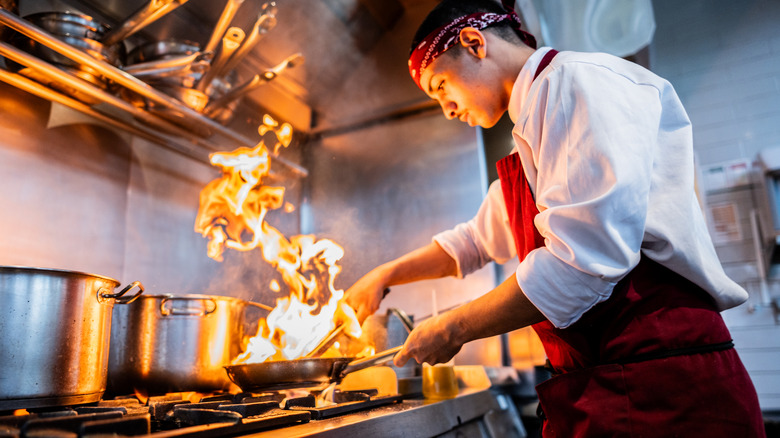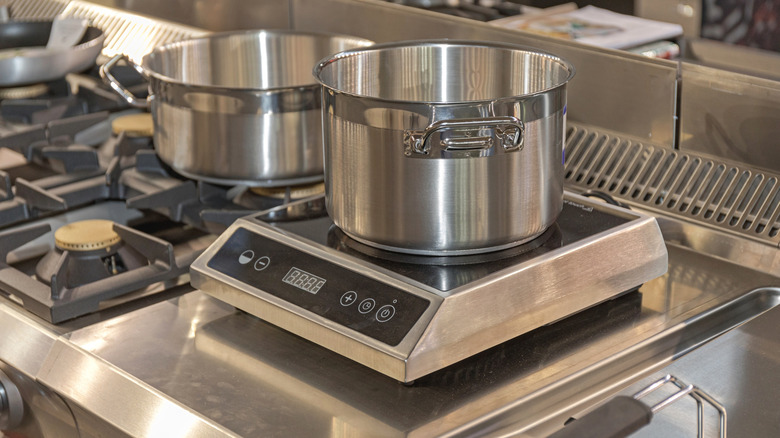Why Professional Chefs Prefer Gas Stoves (But Electric Ovens)
Chefs can argue endlessly about plating, but when it comes to stoves and ovens, most agree on one thing: Gas up top, electric underneath. "On a line, gas wins for most cooks because they see the flame and change heat instantly," says Dennis Godynuk, lead appliance expert at Comfort Appliance Repair in Nashville. With gas, you can tilt a pan, kill the flame in a second, or crank it high for a hard sear. That kind of control matters when six dishes are moving at once.
Where gas falters is in the oven. For baking and roasting, chefs often prefer electric because the heat is more even and consistent across trays. "Electric elements hold temperature more evenly and the heat is drier," Godynuk explains, which means more reliable browning, fewer hot spots, and less babysitting. Home cooks who are frustrated by uneven roasts or collapsed casseroles know the struggle — it's the same reason an electric oven often feels like a quiet upgrade. In professional kitchens where speed and consistency rule, the winning combo is clear: Gas for the stove, electric for the bake.
Why some chefs are turning to induction
Gas may still dominate in restaurants, but induction has been creeping into more kitchens for one simple reason: Efficiency. "If ventilation is great and energy costs are high, I'll definitely recommend induction," Godynuk says. "It's as fast as gas, safer, and keeps the kitchens cooler." That last part is crucial — if you've ever watched a line cook sweat through a dinner rush, you know the kitchen can get hot. Induction burners, which use magnets to heat pans directly, waste less energy and radiate less excess heat. (You can solve a classic induction stovetop mistake just by using the right type of cookware.)
There's also the health and sustainability angle. Unlike gas, induction doesn't release the same pollutants into the air, an issue that's pushed lawmakers in places like California to start phasing out gas stoves. Studies have even linked gas appliances to higher rates of childhood asthma, meaning it might be time to say goodbye to gas stoves. For many chefs, though, the best choice for cooking comes down to habit. Working over a visible flame offers instant feedback — you see the heat, you feel the control. That muscle memory is hard to replace, even if induction promises precision without the smoke and sputter. But the dual-fuel setup — gas or induction on top with electric below — is what most chefs trust. With the right speed and consistency, it's the best of both worlds.

